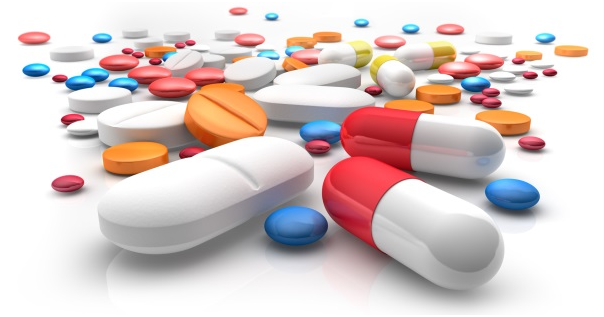Inhaled Corticosteroids
Mode of Action
Corticosteroids bind to cytosolic glucocorticoid receptors to decrease transcription and production of inflammatory cytokines e.g. interleukin (IL)-4 (IL-4), IL-13, granulocyte macrophage colony stimulating factor (GM-CSF), eotaxin and regulated on activation, normal T cells expressed and secreted (RANTES), which function in bronchoconstriction and airway inflammation.
Corticosteroids suppress eosinophilic airway inflammation in asthma. Active eosinophilic airway inflammation (defined by sputum eosinophilia >3%) is associated with increased rates of asthma exacerbations. Management strategies that effectively suppress sputum eosinophilia have been found superior to standard monitoring of asthma (1).
Interventional endobronchial biopsy studies using ICS have repeatedly shown reduction in sub mucosal eosinophils and CD3+ lymphocytes. Most of these studies also report reduction in large airway reticular basement thickness, a feature of airway remodelling.
ICS administered through different devices have different therapeutic effects. For example, pressure metered dose inhalers (pMDIs) with spacer devices reduce systemic absorption, while use of turbo halers results in deeper deposition of ICS within the pulmonary tree. Ciclesonide is a newer pro-ICS drug metabolized to an active form by esterases following delivery to the lung. Delayed activation reduces local oropharyngeal effects and also the risk of suppressing the hypothalamic-pituitary-adrenal axis.
Side Effects
Local pharyngeal ICS-induced side effects such as oral candidiasis and hoarseness commonly occur. This risk is reduced by use of a dry powder inhaler (DPI) or a turbo haler, by using pMDIs with spacers, or by mouth washing and gargling following administration.
High doses of ICS can induce systemic side effects with skin thinning and bruising, cataracts and osteopenia.
Adrenal suppression is a particularly serious risk in children.
In allergic bronchopulmonary aspergillosis (ABPA) concomitant use with triazoles (e.g. itraconazole) which inhibit P450-dependent CYP3A4, can lead to decreased clearance of synthetic corticosteroids and subsequent adrenal suppression and Cushing’s syndrome.
ICS improve asthma control, reduce exacerbations and prevent asthma deaths . They should be used in any patient requiring use of a short-acting β2-agonist more than three times per week. The aim of therapy is to titrate the ICS dose to the lowest effective dose that maintains asthma control, and to ensure that the patient can use their inhaler device properly.
In general, DPIs are easier to use than pMDIs. It is unlikely that there is clinical benefit at doses above daily beclomethasone 2000 mcg or its equivalent. Chlorofluorocarbon (CFC) propellants in pMDIs for medication are being phased out and replaced by hydroxyfluoroalkane (HFA) propellants. For the HFA formulation of beclomethasone, the equivalent dose of beclomethasone is half that of current CFC formulations.
Comments
ICS improve asthma control, reduce exacerbations and prevent asthma deaths . They should be used in any patient requiring use of a short-acting β2-agonist more than three times per week. The aim of therapy is to titrate the ICS dose to the lowest effective dose that maintains asthma control, and to ensure that the patient can use their inhaler device properly.
In general, DPIs are easier to use than pMDIs. It is unlikely that there is clinical benefit at doses above daily beclomethasone 2000 mcg or its equivalent. Chlorofluorocarbon (CFC) propellants in pMDIs for medication are being phased out and replaced by hydroxyfluoroalkane (HFA) propellants. For the HFA formulation of beclomethasone, the equivalent dose of beclomethasone is half that of current CFC formulations.




